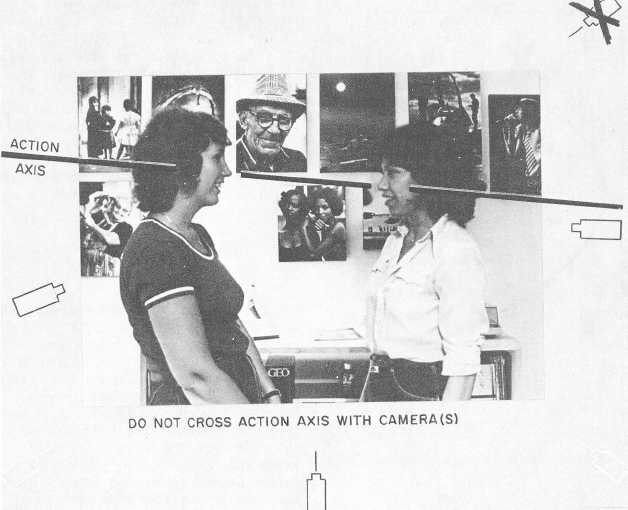302.215
Figure 13-14.–To maintain static screen direction, do not cross the action axis with a camera.
direction, the camera operator must remain on one side
of the action axis (fig. 13-14).
CUT-IN AND CUTAWAY SHOTS
In filming uncontrolled action, it is almost
impossible at times to film overlapping action. This is
where cut shots come into play. Cut shots are extremely
valuable because they provide a form of audience
distraction In addition, the cutaway can account for
lapses of time and stimulate audience interest; therefore,
if you shoot plenty of cutaways and cut-ins, you have
passed a major stumbling block in shooting uncontrolled
action. Shooting a football game is a good example of
uncontrolled action; but can you imagine how boring it
would be if there were no cutaways or cut-ins? An
audience would soon get tired of seeing nothing but
football plays. By using different scenes, you can show
just the highlights of the game and the audience will go
away satisfied, feeling that they have seen the entire
game.
Cut-ins and cutaways are related to the primary
subject or action. They show something that may or may
not have occurred simultaneously with the primary
action. Both cut-ins and cutaways fill gaps between
scenes where the action does not match. The use of
cut-ins and cutaways can account for a lapse of time or
they are used to create or enhance the mood of a film.
Cutaway shots are scenes that “cut” away from the
action. Crowds, cheering fans, cheerleaders, and side-
line action are all examples of cutaway shots. Ideally,
cutaways should smooth out the continuity of the film,
so the audience does not realize that some of the action
that took place on the field has been removed from the
film.
13-20


